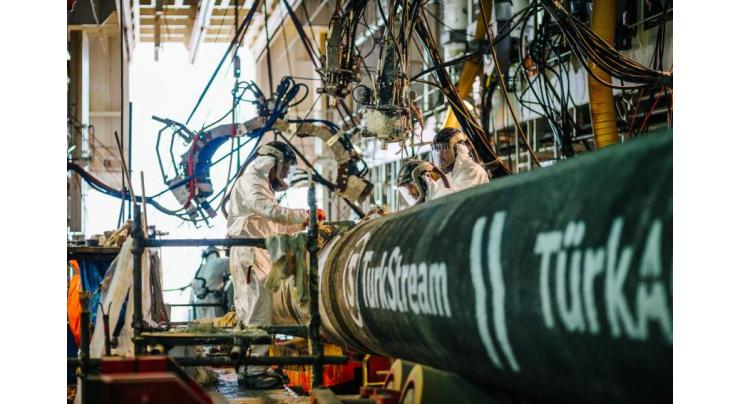
- Home
- Business
- News
- Greece's DEPA Gets All Licenses for Onshore Part of Poseidon Pipeline for Russian Gas
Greece's DEPA Gets All Licenses For Onshore Part Of Poseidon Pipeline For Russian Gas
Mohammad Ali (@ChaudhryMAli88) Published September 09, 2019 | 02:09 PM

Greek gas corporation DEPA has completed all engineering studies and obtained all licenses for the onshore section of the Poseidon gas pipeline project, planned for deliveries of Russian gas to Europe, Dimitrios Manolis, DEPA Head of International Activities, told Sputnik
THESSALONIKI (UrduPoint News / Sputnik - 09th September, 2019) Greek gas corporation DEPA has completed all engineering studies and obtained all licenses for the onshore section of the Poseidon gas pipeline project, planned for deliveries of Russian gas to Europe, Dimitrios Manolis, DEPA Head of International Activities, told Sputnik.
"In accordance with the cooperation agreement between Gazprom, DEPA and Edison, signed in St. Petersburg on June 2, 2017, all required front-end engineering design (FEED) for the IGI Poseidon project was timely completed and all environmental permits for the onshore section the Poseidon pipeline project were obtained," Manolis said.
The agreement allocated two years for engineering surveys and obtaining licenses, both were completed as planned.
"The fully developed and approved Poseidon project is a realistic and viable option for transporting any gas available on the Greek-Turkish border, in accordance with EU rules," Manolis said.
The Poseidon project was designed to diversify the deliveries of Russian gas to Europe from several sources, including from the Turkish border with Greece, and from other countries of the Eastern Mediterranean. In June 2017, Gazprom, Edison and DEPA signed a cooperation agreement for the implementation of the project.
The project is designed to deliver 12 billion cubic meters of gas per year with the possibility of increasing capacity to 20 billion cubic meters. The onshore section of the gas pipeline in Greece has a length of 770 kilometers (478 miles), the underwater section across Ionian Sea is 210 kilometers long. Gas for the project was supposed to be taken from the second line of the TurkStream, a project to deliver gas from Russia to Turkey across Black Sea, but then it was decided to run the source pipeline through Bulgaria.
Related Topics
Recent Stories

Miner Anglo American rejects BHP's near $39-billion takeover bid

115 held for selling roti at higher rate

New Zealand cricket CEO visits PSCA, expresses satisfaction over security arrang ..

NAB Lahore holds open court, promises compensations for victims

2 injured over money dispute

At least 10 people killed in Brazil fire: officials

'Transforming Punjab Agriculture' plan to help develop farm sector on modern lin ..

Chairman PRCS engages in humanitarian collaboration with ambassador of Morocco

US stocks rebound on tech earnings, London hits new record

Junta-led Burkina Faso suspends BBC, Voice of America for two weeks

Saudi to host top Arab, EU diplomats for Gaza talks: officials

ECP’s code of conduct to be ensured during Tehsil Mayor by-elections: DPO Dera
More Stories From Business
-

US stocks rebound on tech earnings, London hits new record
12 minutes ago -

SECP-IFSB workshop highlights Pakistan's progress in Islamic Finance Development
12 minutes ago -

SBP to announce monetary policy on April 29
12 minutes ago -

50pc cut in subsidy of BRT service likely: CM’s aide
1 hour ago -

PSX gains 771 points
2 hours ago -
Pakistan, US hold 7th TIFA meeting to strengthen trade and investment ties
3 hours ago
-

Meeting held to streamline trade between Pak-Afghan , Central Asian Republics
2 hours ago -
Coca-Cola invests an additional $22 million in Pakistan
3 hours ago -
SECP Introduces SECP-XS: A swift complaint resolution platform
3 hours ago -

SBP to announce monetary policy on April 29
2 hours ago -

London stocks hit new record peak on takeovers
2 hours ago -

Rupee sees slight recovery against US dollar
2 hours ago














